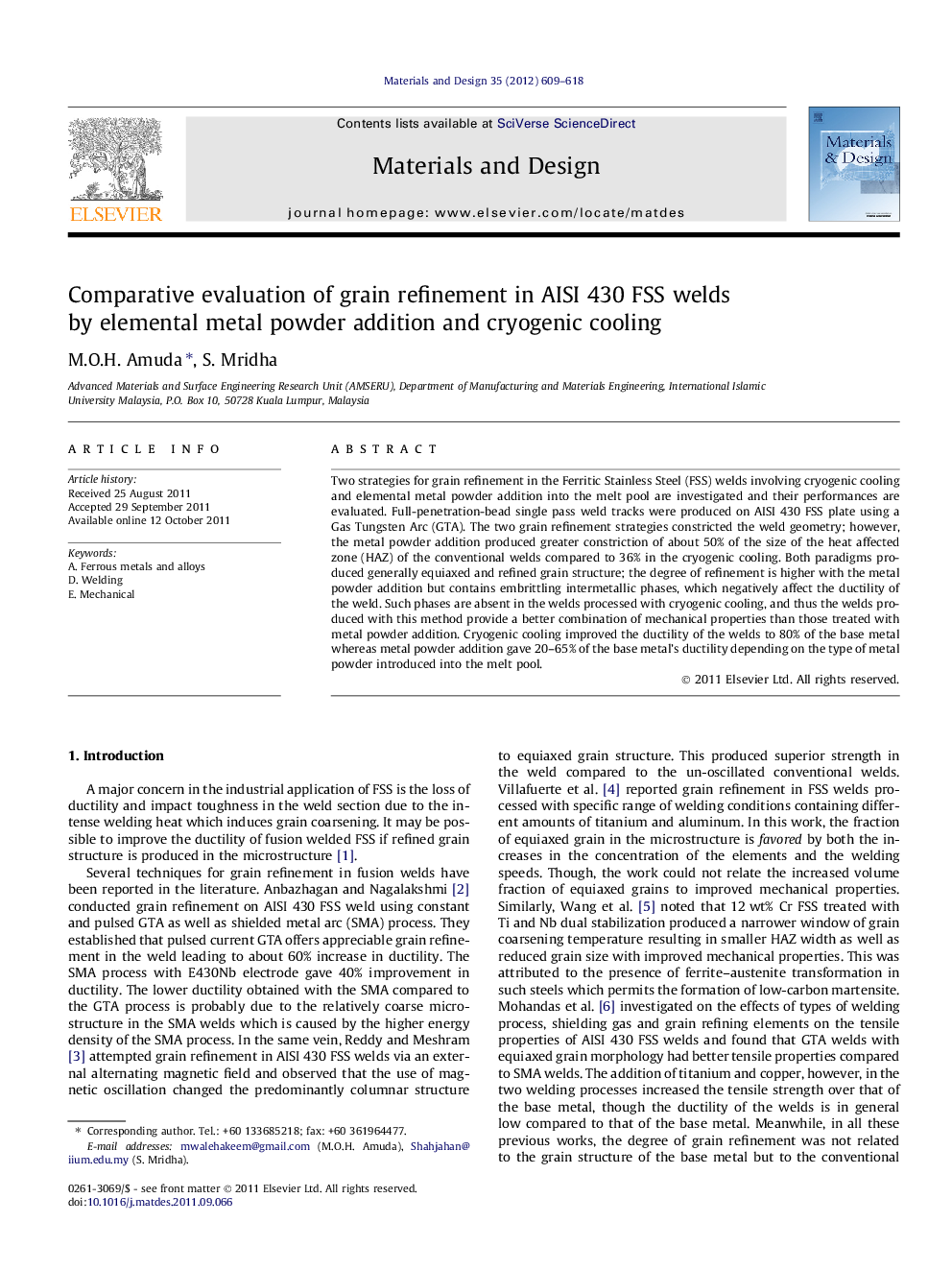| Article ID | Journal | Published Year | Pages | File Type |
|---|---|---|---|---|
| 830978 | Materials & Design (1980-2015) | 2012 | 10 Pages |
Two strategies for grain refinement in the Ferritic Stainless Steel (FSS) welds involving cryogenic cooling and elemental metal powder addition into the melt pool are investigated and their performances are evaluated. Full-penetration-bead single pass weld tracks were produced on AISI 430 FSS plate using a Gas Tungsten Arc (GTA). The two grain refinement strategies constricted the weld geometry; however, the metal powder addition produced greater constriction of about 50% of the size of the heat affected zone (HAZ) of the conventional welds compared to 36% in the cryogenic cooling. Both paradigms produced generally equiaxed and refined grain structure; the degree of refinement is higher with the metal powder addition but contains embrittling intermetallic phases, which negatively affect the ductility of the weld. Such phases are absent in the welds processed with cryogenic cooling, and thus the welds produced with this method provide a better combination of mechanical properties than those treated with metal powder addition. Cryogenic cooling improved the ductility of the welds to 80% of the base metal whereas metal powder addition gave 20–65% of the base metal’s ductility depending on the type of metal powder introduced into the melt pool.
► Metal powder addition constricted the weld geometry more than cryogenic cooling. ► Metal powder addition generated greater refined grain structure than cryogenic cooling. ► Metal powder addition generates intermetallic phase no such phase in cryogenic cooling. ► Thus, metal powder treated welds despite the greater refinement exhibited lower ductility. ► Factors other than grain size may equally have influence on weld properties.
